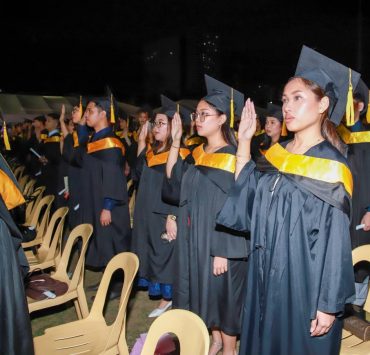A few steps toward a safe school environment

The Philippines ranks highest in exposure to bullying based on the data from Programme for International Student Assessment (Pisa) 2018 and 2022.
With the alarming statistics calling for urgent attention and raising critical questions about the contributing factors to this pervasive issue, the Second Congressional Commission on Education (EdCom II) has made this one of its priority areas.
A recent study by EdCom II research fellows using Pisa 2018 data revealed several factors contributing to bullying in schools. Among these, student-to-teacher ratio, discriminatory climate, attitude toward bullying, and perception of competitiveness stand out.
Understanding these factors is vital in addressing and mitigating bullying in our schools. Furthermore, several potential solutions can be proposed based on these findings.
First, addressing the shortage of classrooms and teachers in public schools should be a priority for the Department of Education. The study revealed that schools with higher average reported bullying incidents tend to have a larger number of students relative to the number of teachers.
This suggests that bullying is more likely to occur when there are fewer adults to supervise and intervene. This highlights the crucial role of adequate teacher presence in maintaining a safe school environment. More teachers would mean better supervision of students, thereby reducing opportunities for bullying to occur.
Children should be taught about the harms of bullying and the importance of not participating in such behavior from an early age.
The findings suggest that attitudes of students toward bullying play a crucial role in its prevalence. In schools where students are less inclined to view bullying as wrong or are unwilling to defend their peers, bullying incidents are more frequent.
This indicates that fostering a school culture that condemns bullying and encourages students to stand up against it is essential in reducing bullying incidents. Educating children on effective and peaceful ways of resolving interpersonal conflicts can also prevent them from resorting to bullying.
This can be incorporated into the curriculum through programs and activities that promote empathy, respect, and conflict-resolution skills We, adults, should also practice what we preach. As adults, we must be role models and set good examples for our children.
The study shows that bullying is more evident in schools where there is discrimination by teachers against certain cultural groups. When teachers exhibit discriminatory behavior, it may signal to students that it is acceptable to harbor hatred and prejudice toward others, thereby fostering a culture of bullying.
Therefore, schools must promote inclusivity and respect within the educational system, beginning with the attitudes and behaviors of educators themselves. By being less discriminating and more accepting of others, we communicate to children that discrimination and bullying are unacceptable behaviors.
Schools should also have policies and programs in place to train teachers and staff on recognizing and addressing discriminatory behaviors, ensuring a more inclusive and respectful environment for all students. Finally, schools and teachers should ensure that students are academically engaged.
While common knowledge might suggest that competition could breed animosity and, consequently, bullying, it is interesting that the research found that bullying is less prevalent in schools where students value competitiveness and perceive their classmates as competitive.
This might indicate that when students are preoccupied with their academics and actively competing with their classmates, they are less likely to engage in bullying behavior. Incorporating learning models that foster healthy competition in the classroom can be beneficial.
Activities such as academic competitions, debates, and science fairs not only enhance learning but also provide students with constructive outlets for their competitive energies.
When students are preoccupied with their academics, there is less room for bullying. The high prevalence of bullying in Philippine schools is a multifaceted issue that requires a comprehensive approach to address.
By increasing adult supervision, addressing discriminatory behaviors, fostering a school culture that condemns bullying, and promoting academic engagement, we take a few steps closer to a safer and more inclusive learning environment for our students. It is crucial that we take these steps to protect our children and ensure that they can learn and grow in a supportive and nurturing environment.
Dr. Rene M. Nob is an associate professor at De La Salle University. He is a co-author of one of the research studies on bullying commissioned by EdCom II.

















